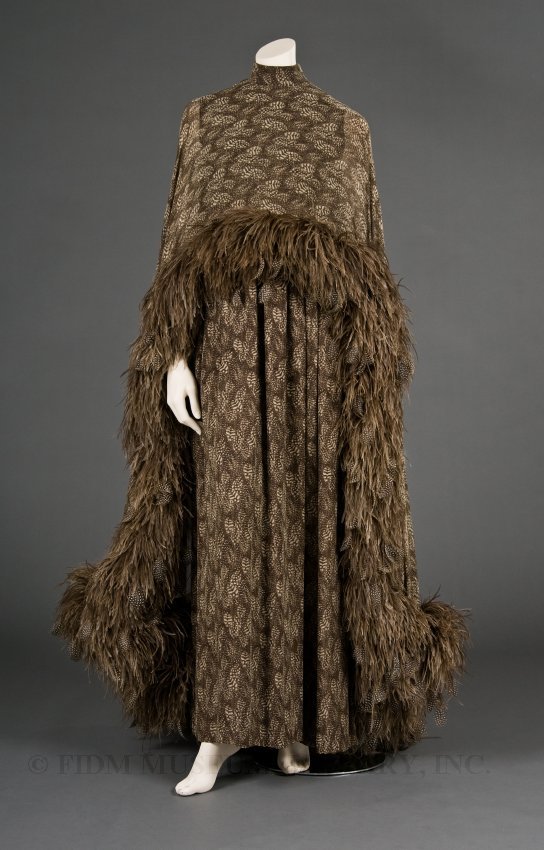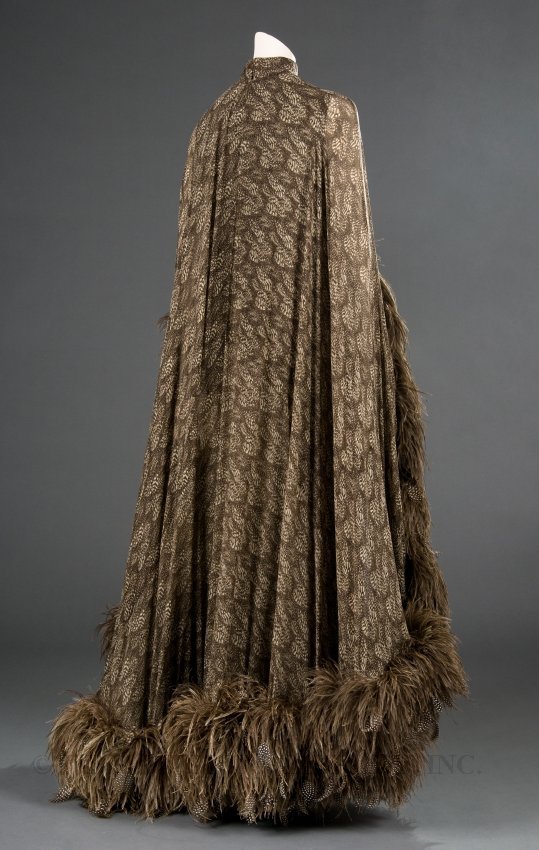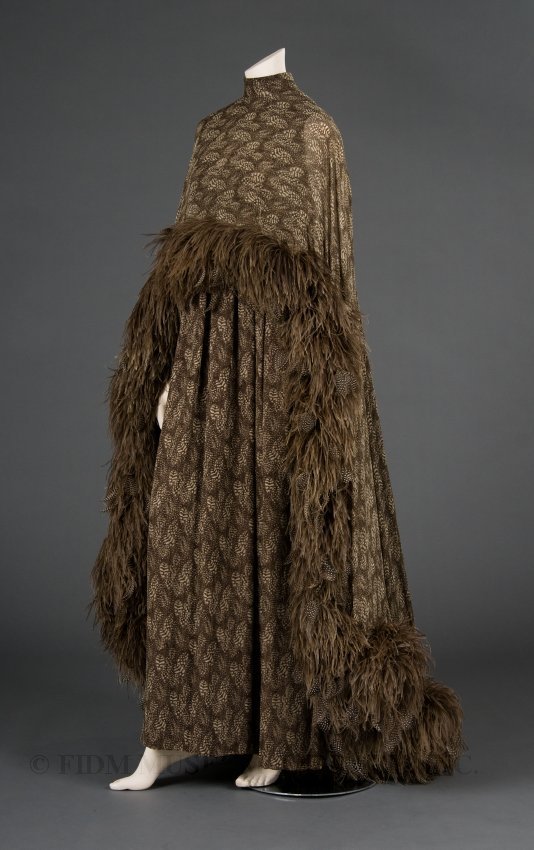Born in Ohio in 1930, George Halley milked cows on his family's farm until he graduated from high school, then hitchhiked to New York to follow his dream of becoming a fashion designer. He began his career as a window dresser at Lord & Taylor; Charles James admired his work and gave him a job in his atelier. Halley worked his way up in the business, launching his own collection in 1967; he was rewarded with a Coty Award in 1968. Halley was the rare Seventh Avenue designer who could construct a garment from start to finish; he always made one or two dresses in each collection himself, "just for luck."1

George Halley, New York
c. 1971
Gift of Clarissa Dyer
2003.794
In 1958, Halley married Claudia Morgan, a former model for Norman Norell, who became his muse. "I never design anything Claudia wouldn't wear," he once said. When Claudia demanded evening clothes "that make me feel like I can get up and have fun," Halley recognized an untapped market for sexy dance dresses. A few weeks later, for a dinner dance at the St. Regis Hotel, "George insisted Claudia wear his new feather-printed chiffon capelet gown rimmed in ostrich"–possibly the same model as this gown in the FIDM Museum collection. "We danced all night," Halley remembered. "When Claudia is happy with a fashion, it sells. She's a fantastic barometer."2
This sleeveless, high-waisted gown with attached stole unites many of Halley's signatures: a bold print, feather trim, and high-quality fabric and workmanship. Like most of his evening wear, it is a romantic, feminine, expensive-looking garment that barely touches the body. Combining seventies chic with Old Hollywood glamour, it captures the seductively original viewpoint of the man Women's Wear Daily called "a designer in a lovely world of his own."3
 1 Women's Wear Daily, June 30, 1967.
1 Women's Wear Daily, June 30, 1967.
2 Beaver County Times, December 4, 1971.
3 Women's Wear Daily, June 11, 1970.



Love! I can imagine this design had great movement. I love George Halley’s silhouettes and the whimsy! ❤️